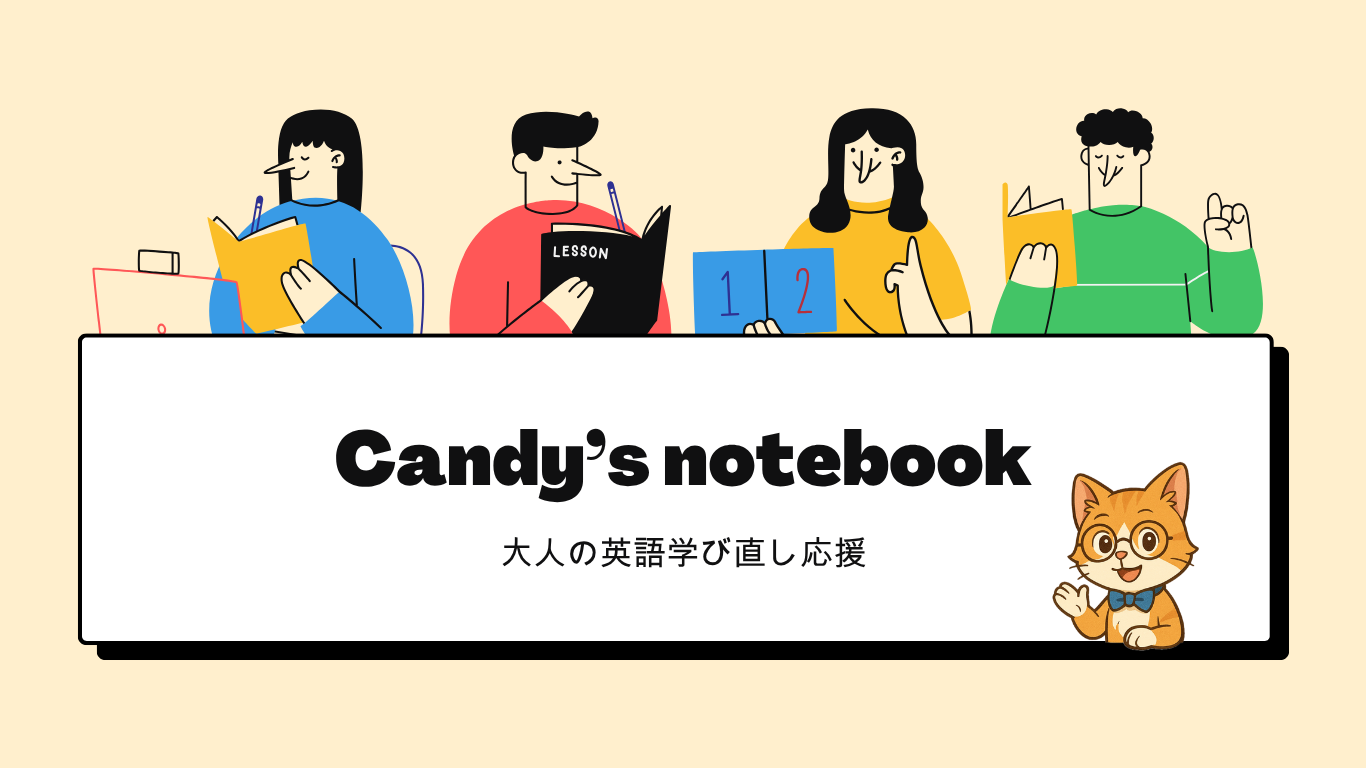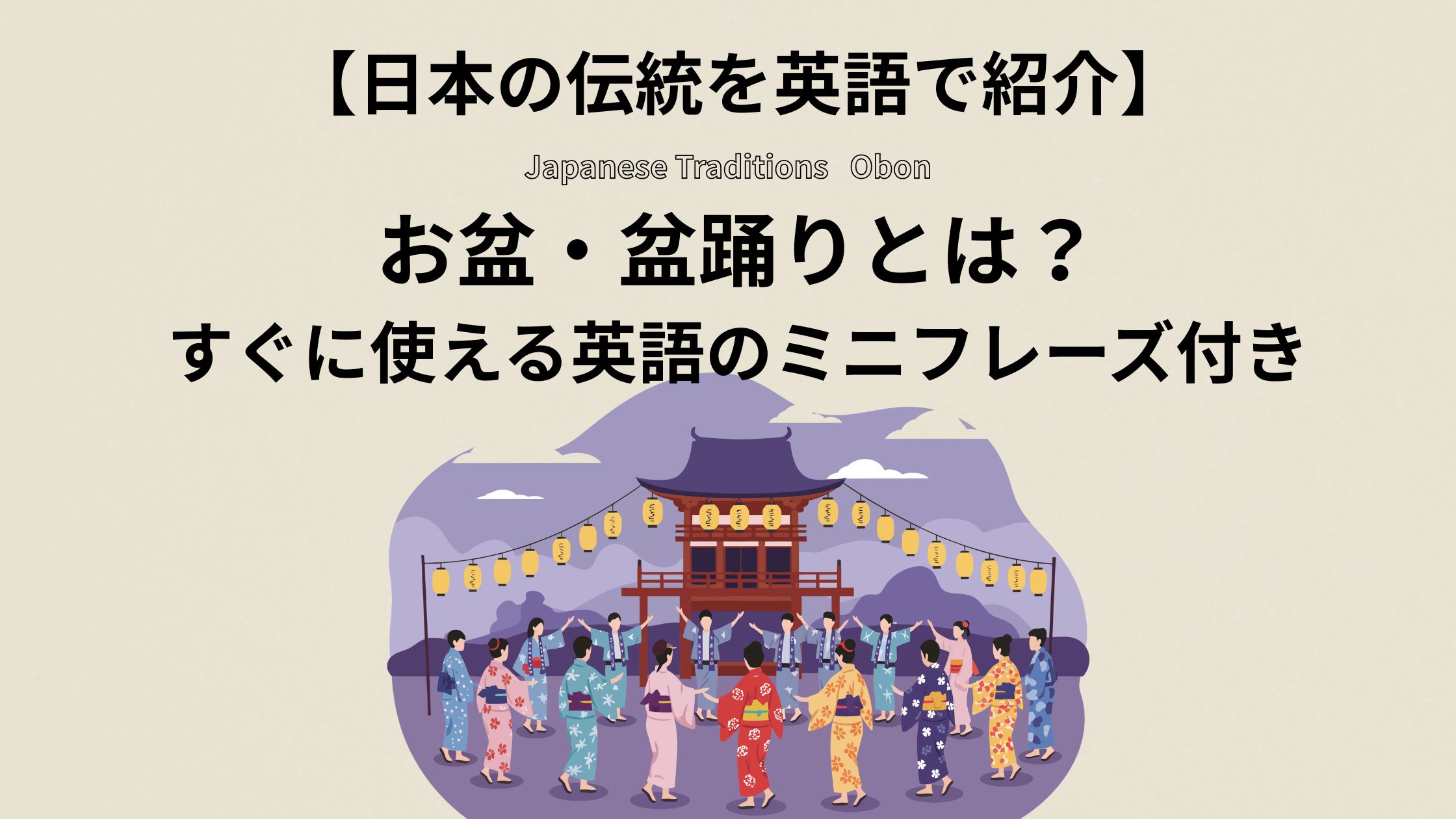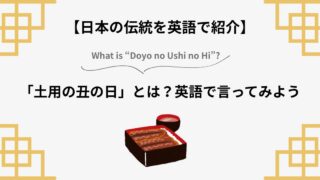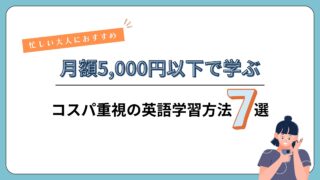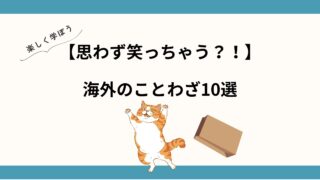
日本の伝統行事「お盆」「盆踊り」を英語で説明してみよう!
お盆の意味や踊りの由来、時期を英語と日本語で解説。
最後には、すぐに英会話で使えるフレーズ集でまとめたよ!
What is Obon?
お盆とは?
Obon is a traditional Japanese event held in mid-August to honor the spirits of our ancestors. It is believed that during this time, the spirits of the deceased return to the world of the living to visit their families. People often visit graves to clean them and offer flowers, and homes are decorated with lanterns to guide the spirits back. Typical decorations include fresh flowers, shouryou-uma—cucumber and eggplant figures representing spirit animals—and houzuki (bright orange lantern plants).
日本語訳:
お盆は、先祖の霊を敬うために毎年8月中旬に行われる日本の伝統的な行事です。この期間、亡くなった人々の魂が家族のもとへ帰ってくると信じられています。人々はお墓を掃除して花を供えたり、家では提灯、盆棚を飾って霊が迷わず帰ってこられるようにします。飾りには、新鮮な花のほか、きゅうりとナスで作る精霊馬(霊が乗るとされる動物)や、鮮やかなオレンジ色のホウズキなどが使われます。

When is Obon?
お盆はいつ?
Obon is usually celebrated from August 13th to 16th, though the exact dates may vary by region. In some areas, it is observed in July, based on the lunar calendar.
日本語訳:
お盆は通常、8月13日から16日にかけて行われますが、地域によって日程が異なることがあります。旧暦に基づいて7月に行われる地域もあります。

The Meaning of Bon Odori
盆踊りとは?
Bon Odori, or “Bon Dance,” is a folk dance performed during Obon. Originally, it was a way to welcome and entertain the spirits. Today, it is also a chance for communities to come together and celebrate.
日本語訳:
盆踊りは、お盆の期間に行われる民俗舞踊です。もともとは、先祖の霊を迎え入れ、楽しませるための踊りでしたが、現代では地域の人々が集まり、共に楽しむお祭りとしての役割も果たしています。
How is it Performed?
盆踊りはどのように行われる?
Dancers move in a circle around a raised platform called a yagura. The steps are simple and repetitive, so anyone can join in. The music varies by region, often featuring traditional instruments like taiko drums.
日本語訳:
踊りは、櫓(やぐら)と呼ばれる高台を囲んで円になって行われます。振り付けはシンプルで繰り返しが多いため、誰でも気軽に参加できます。音楽は地域によって異なり、太鼓などの伝統楽器がよく使われます。

Yatai:Food Stalls at Bon Odori
Bon Odori festivals often feature yatai, or food stalls, that sell popular snacks like cotton candy, yakisoba, and takoyaki. People enjoy these foods on the spot, adding to the lively and festive atmosphere.
日本語訳:
盆踊りの会場には、綿菓子、焼きそば、たこ焼きなどを売る屋台が並ぶことも多いです。その場で食べながら楽しめるこれらの食べ物が、盆踊りのにぎやかで楽しい雰囲気をさらに盛り上げます。

The Deeper Spirit of Obon
お盆に込められた思い
Beyond the dance, Obon is a time to reflect on our roots and express gratitude to those who came before us. Lighting lanterns and visiting graves are also common ways to honor the spirits.
日本語訳:
盆踊りだけでなく、お盆は自分のルーツを振り返り、先人への感謝を表す時間でもあります。提灯に灯をともしたり、お墓参りをしたりすることで、先祖の霊を敬います。

すぐに英会話で使える!フレーズ集
1. 基本の紹介に使えるフレーズ
“Obon is a Japanese Buddhist tradition to honor our ancestors.”
「お盆は先祖を敬うための日本の仏教行事です。」
“It’s believed that the spirits of the deceased return home during this time.”
「この時期、亡くなった人々の魂が家に帰ってくると信じられています。」
2. 盆踊りを説明するフレーズ
“Bon Odori, or Bon Dance, is performed to welcome and entertain the spirits.”
「盆踊りは、先祖の例を迎え入れ、楽しませるために踊ります。」
“We dance in a circle around a raised platform called a yagura.”
「櫓(やぐら)と呼ばれる高台を囲んで円になって踊ります。」
“The steps are simple, so anyone can join in.”
「振り付けは簡単なので、誰でも参加できます。」
3. 行事全体を説明するフレーズ
“Obon is usually held from August 13th to 16th, though dates vary by region.”
「お盆は通常8月13日から16日に行われますが、地域によって日程が異なります。」
“Lanterns are often lit to guide the spirits back home.”
「提灯の灯りで霊を家に導くこともあります。」
4. 文化的な意味を伝えるフレーズ
“Obon reminds us that life is connected across generations.”
「お盆は、命が世代を超えてつながっていることを思い出させてくれます。」
5. 会話で締めるときの一言
“If you visit Japan in summer, you should definitely join Bon Odori!”
「夏に日本を訪れたら、ぜひ盆踊りに参加してみてください!」
Childhood Memory of Bon Odori 子どもの頃の思い出

In many Bon Odori festivals, children are given small treats or snacks. I still remember the excitement of receiving candies and sweets as a child—it was one of my favorite parts of the summer.
日本語訳:
多くの盆踊りでは、子どもたちにお菓子が配られることがあります。私も子どもの頃、キャンディやお菓子をもらえるのがとても楽しみで、それが夏の大好きな思い出のひとつでした。
ぜひ、日本の伝統を英語でシェアしてみてね!
すぐに使えるフレーズで、SNSに投稿してみるのもおすすめだよ♪
🌷楽しく英語を学ぼう!おすすめ記事3選
